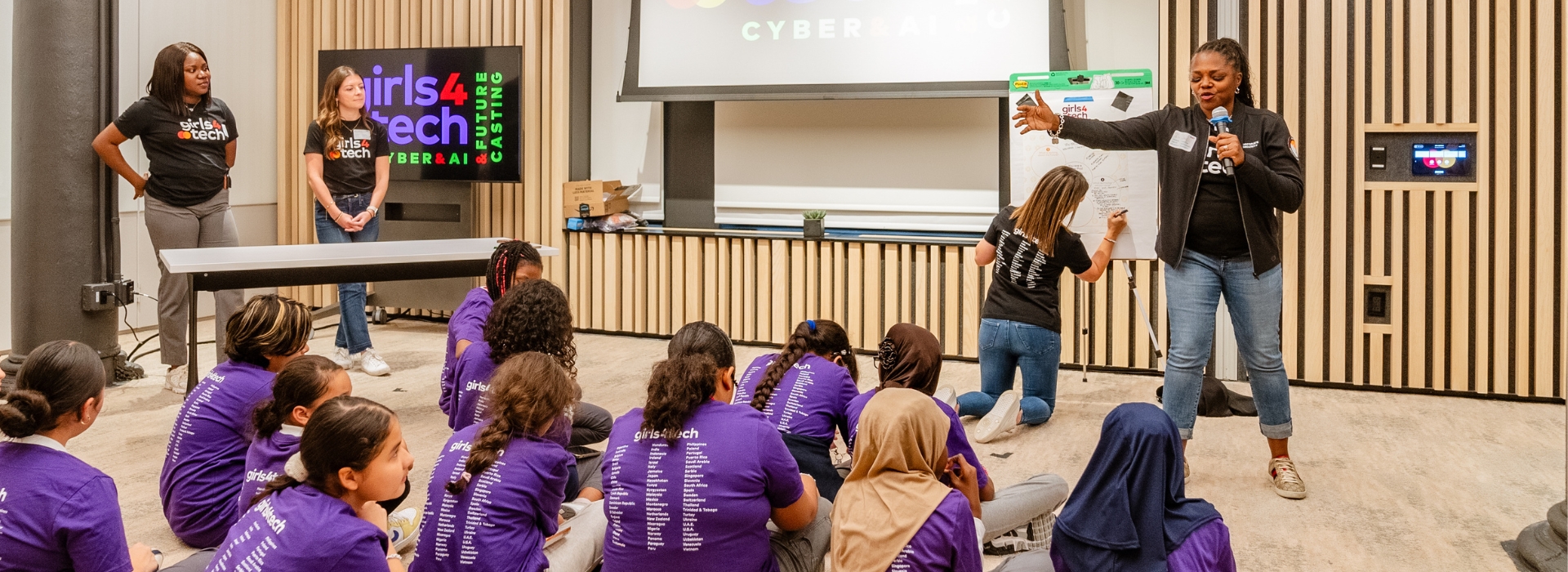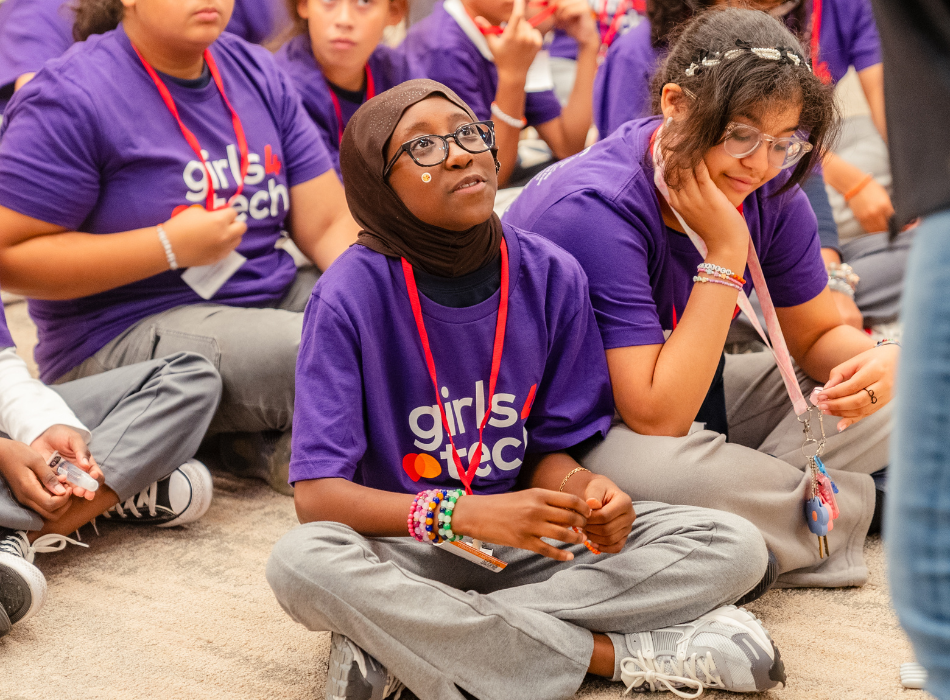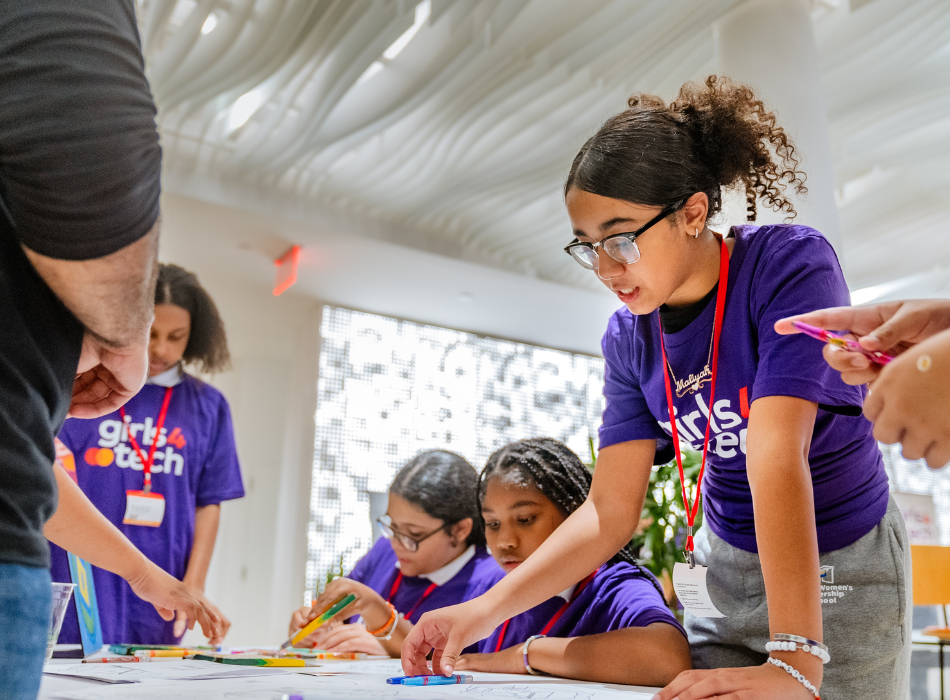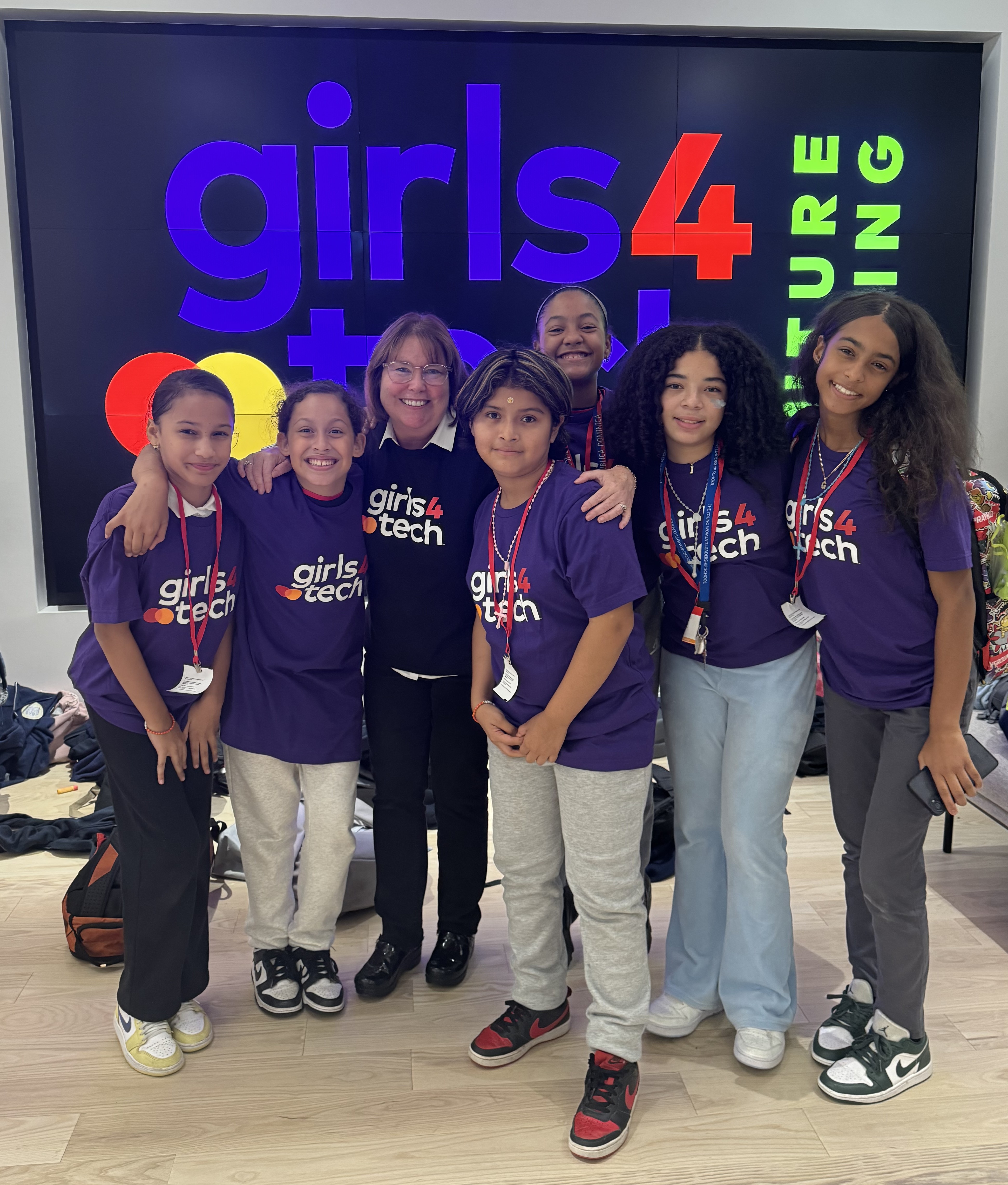These girls are hacking the future
October 8, 2024 | By Rachel King
When it comes to emerging technology, the young girls sitting cross-legged on the floor were clear-eyed about its potential — could robots solve climate change, they wondered — and its pitfalls — “AI can copy your face,” warned 12-year-old Mariely Payano Garcia.
In fact, Garcia, one of thirty middle-school students from the Young Women’s Leadership School of the Bronx gathered at Mastercard’s Tech Hub in Manhattan last week, summed up the pros and cons in one pronouncement: “AI could be smarter than humans.”
From social engineering scams to ransomware to disinformation campaigns, cybersecurity risks are rampant and growing, yet there is a huge global cyber tech talent shortage. Garcia and the other students donned purple Girls4Tech T-shirts over their school uniforms as part of a unique event for Cybersecurity Awareness Month that was both tailored for their age and aimed to harness the cyber insights of these young digital natives.
Last week’s gathering combined immersive learning about cyber and artificial intelligence via Mastercard’s Girls4Tech STEM education program, which has reached nearly 7 million girls across the globe in the 10 years since its founding, and a hands-on session dubbed “futurecasting” with cyber experts to uncover unconventional threats the adults in the room may not have considered.
“Kids don’t say, ‘That’s not how the world works’ or ‘That’s not how corporate works,’” said Alissa “Dr. Jay” Abdullah, Mastercard’s deputy chief security officer. “They're full of ideas, and it's our responsibility to take those ideas and think about how they could materialize in the future.”


The Girls4Tech cyber and AI curriculum helps students understand that their skills and strengths may make them suited to many STEM careers.
The space vibrated with conversation and excitement as the girls learned about defining a digital footprint to AI's potential impact on daily life. They rotated between stations — exploring cybersecurity, AI and the Internet of Things, advanced fraud detection, cyber hygiene and behavioral biometrics — each designed to encourage the girls to envision themselves as the cyber professionals of tomorrow.
Then they sat down with Abdullah and futurist Brian David Johnson, who runs Arizona State University’s Threatcasting Lab, which helps organizations, including Mastercard, visualize risks 10 years down the line and how to disrupt or mitigate them. During the futurecasting session, Johnson reinforced to the girls that they are not passive participants, but a critical voice in the fight against hackers now.
“You’d be surprised by how savvy young people are. I’m always blown away by their creativity,” Johnson said. “They understand parts of the internet that we, as adults, don’t, and they live in a world where there are perils — online and in social media. These girls could very well be our future workforce, but we know their insights gleaned today can help us protect the broader ecosystem.”
Abdullah noted that today’s middle schoolers are already immersed in technology — using AI assistants like Siri or Google Home — and that the event was about framing cybersecurity in a way they could understand.
Garcia left the Tech Hub with a plan to protect her family by providing them with a few tips on how to clean up their digital footprints, such as safeguarding their devices when on social media and creating secure online passwords. Mia Caballero, 12, marveled at the concept of behavioral biometrics. “I didn’t know you could track someone’s identity by how they type,” she said. “Some people’s digital footprints are not clean.”
Aside from imparting knowledge, the event organizers were also looking to empower their young attendees. “There are two ways to think about it: You can either be impacted by something, or you can impact it,” Girls4Tech founder Susan Warner said.
Girls4Tech helps young women realize they can be the ones shaping the future. By introducing them to the possibilities of cybersecurity, Mastercard hopes to inspire them to fill the industry’s talent gap. “We need to expose younger generations to cybersecurity early,” Abdullah said. “We’ve got to make cybersecurity a cool, attractive option for them.”
Looking ahead, Mastercard sees this as just one step in a broader initiative to engage and educate young people about the cyber future. As Abdullah put it, “We’re planting seeds today that will grow into tomorrow’s cybersecurity leaders.”
The strategy seemed to take hold. As the day wound to a close, the girls were buzzing with new ideas, envisioning themselves not just as participants over the next decade but as active contributors. When Abdullah asked the girls during a group session about the evolution of tech, her final question was, “Who is going to build the future?”
Without missing a beat, a chorus of girls loudly responded, “Us!”

Girls4Tech founder Susan Warner with participants from the Young Women’s Leadership School of the Bronx.